While it may not be to everyone’s liking, especially those enthusiasts who categorize themselves as purists, Porsche is not afraid of pushing through boundaries, both literally and figuratively. They are at the bleeding edge of synthetic fuel (Porsche eFuel), heavily investing into electric vehicles that don’t lose any of the sports car fun or style, and have one of the best suites of digital driver communication through their Porsche Driver Experience interface.
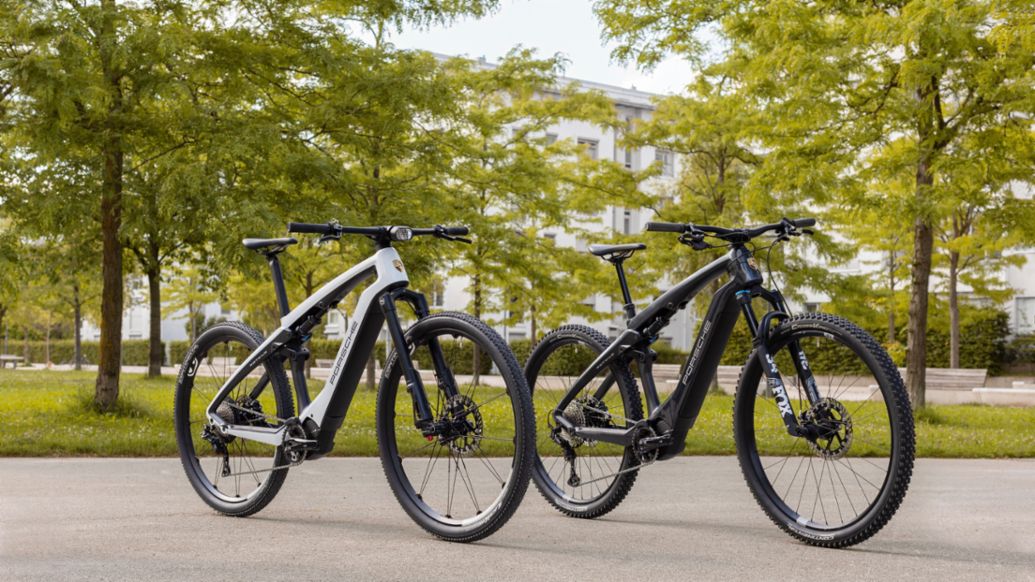
There are, however, a few more boundaries that Stuttgart is looking to push through. With the expansion in all directions of what Porsche dubs “electromobility,” be it via an EV, an electric motorcycle, even eBikes, they are pushing ahead into the digital realm in a big way. The overall goal, it seems, is that by 2030 a fully integrated digital communications network will exist that will connect to every Porsche, and possibly even most cars in general, in real time. It’s a huge project, far larger than just a simple sentence on a screen or a draft plan in a boardroom, which is why things are already happening now to prepare for the end of the decade.
The Launch Of Pull Systems With UP.Labs: Dynamic Programming For Porsche EVs
Porsche has industry partners all over, as do many big manufacturers. Kia and Hyundai, for example, partner with Microsoft for their infotainment systems. Ferrari partners with Shell to develop specific oils and fuels for their supercars. Porsche has partners like Siemens Energy, ExxonMobil, and UP.Labs.
That last partner is an interesting one, as UP.Labs is a sort-of venture company, while also being a sort-of thinktank. It is a division of UP.Partners, a venture capital company, but the Labs are focused on mobility, transportation, and digital interconnectivity. Their stated goal is to identify specific issues with their industry partners, Porsche included, and then form startup companies to tackle those issues.
That is where Pull Systems has come from. Officially launched on March 14, 2023, it is a joint startup with Porsche that is working to build a platform, developed using machine-learning and AI, that can automatically adjust systems and capabilities of an electric vehicle in real time, to maximize battery life, car performance, and range, among other things. While it may sound complex on paper, if you are reading this article on a notebook, a tablet, or a phone, you’re already using a similar type of technology.
The entire gist of Pull Systems’ platform is to keep the important features and systems you use very frequently up at full power the entire time, but things you never use, or very rarely, it will wind down to a lower power state. It will do this invisibly, without affecting the actual driving dynamic of the car in any way, except that you might suddenly jump from 290 miles range to 320 miles range as power hungry, but rarely used systems get wound down.
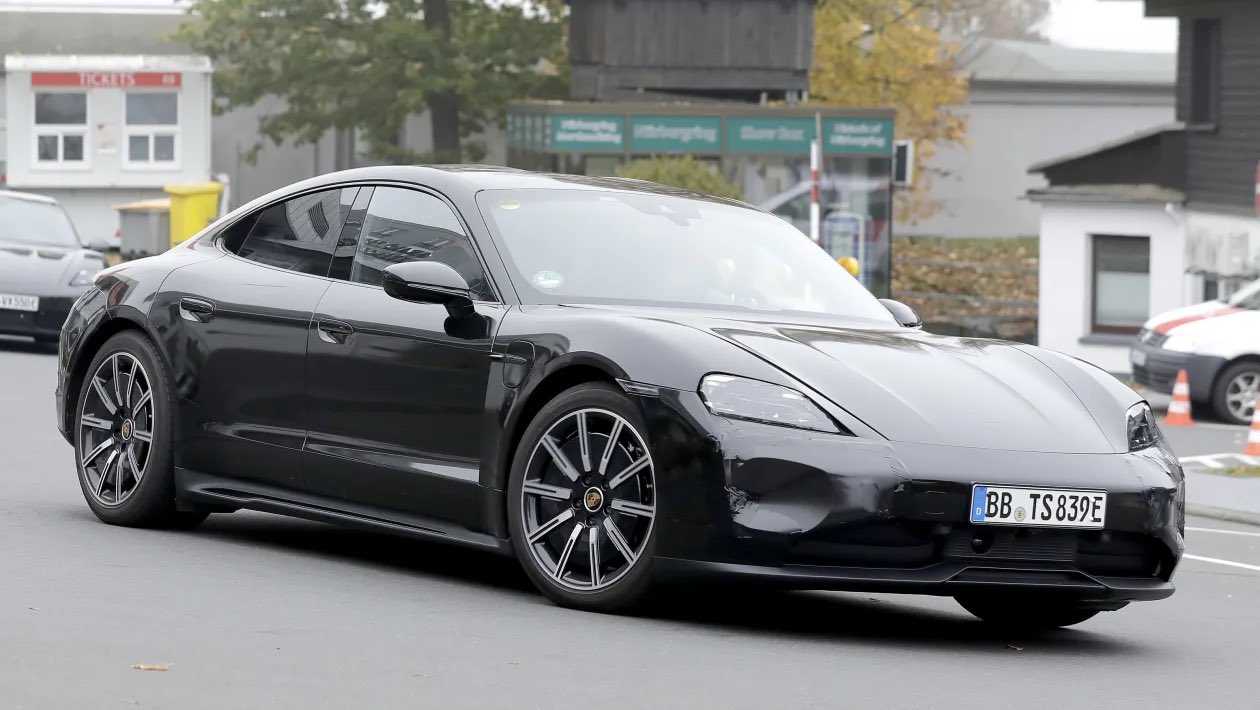
The reality is that programming such a platform is going to take years, although both UP.Labs and Porsche are hoping to have working prototypes by 2025 in the next generation Taycan, and be able to install it into Porsche EVs starting in 2028 or 2029. Also, plans are in place to create five more startups with UP.Labs in the next 2 to 3 years, including a deep learning service that will collate anonymous feedback from all the systems in those 2026+ EVs, and after some very heavy duty AI number crunching. make baseline efficiency recommendations to beam back out to the network.
To see an example of this in practice, albeit for an entirely different purpose, read up here on nVidia Deep Learning Super Sampling (DLSS) at Wikipedia
Connectivity: Porsche’s Major Investment In 5G & Satellite Technology
While the creation of an EV platform that dynamically adjusts battery performance to optimize range and power delivery is one step into the digital realm, the swan dive off the 10 meter board into the deep end comes with mobile connectivity. A lot of cars nowadays have 4G, LTE, and/or wideband hotspots built in, sometimes included as a service, other times requiring a subscription or a mobile data plan and a SIM card.
Yet, for Porsche, that is simply too… simple.
As they put it, consider the switch from mobile phones to smartphones in the late 2000s. At one point in time, a mobile phone was just that, a telephone that fit in your pocket or on your belt, and you used it to make calls to people. The next moment in time, we are carrying around miniature computers in our pockets that are constantly connected 24/7/365, that while they are still phones, they have become so much more than that. Internet browsers, cameras, camcorders, health and fitness trackers, networking devices with bluetooth and/or wifi accessories, and that’s just a list of the bigger things they are used for.
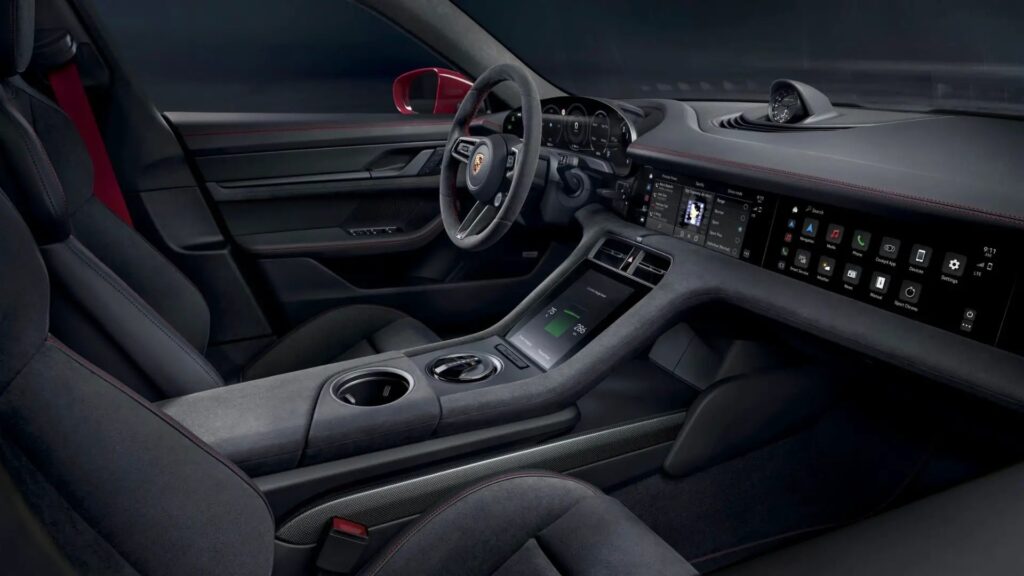
The same is expected to happen with cars, especially EVs. To continue on the smartphone analogy, we’re right at the tipping point in history, where early adopters are already in their EVs and driving around happily, while those who waited are starting to see affordable EVs from Honda, Kia, Ford, and a bunch of other manufacturers hit the market. We are moving from the automobile being “just a car,” to the automobile being a fully digital, networked, connected device that just happens to also have wheels and motors.
Consider that autonomous driving, despite multiple incidents and setbacks in the past half decade, is still a much desired and wanted feature, and is under active development at Porsche partner Siemens Advanced Engineering. At the moment, these systems are isolated, only on the car being tested and not communicating with others. Now imagine that half the cars on the road were connected into a unified network through high speed 5G or 6G signals. If one car experienced an issue, such has having to brake hard for a row of suddenly stopped cars, it can send out a signal to the other autonomous driving cars, and in real time those cars can adapt, either slowing down gradually, changing lanes, or, if enough cars report stopping, even reroute off that section of the road to avoid a traffic jam.
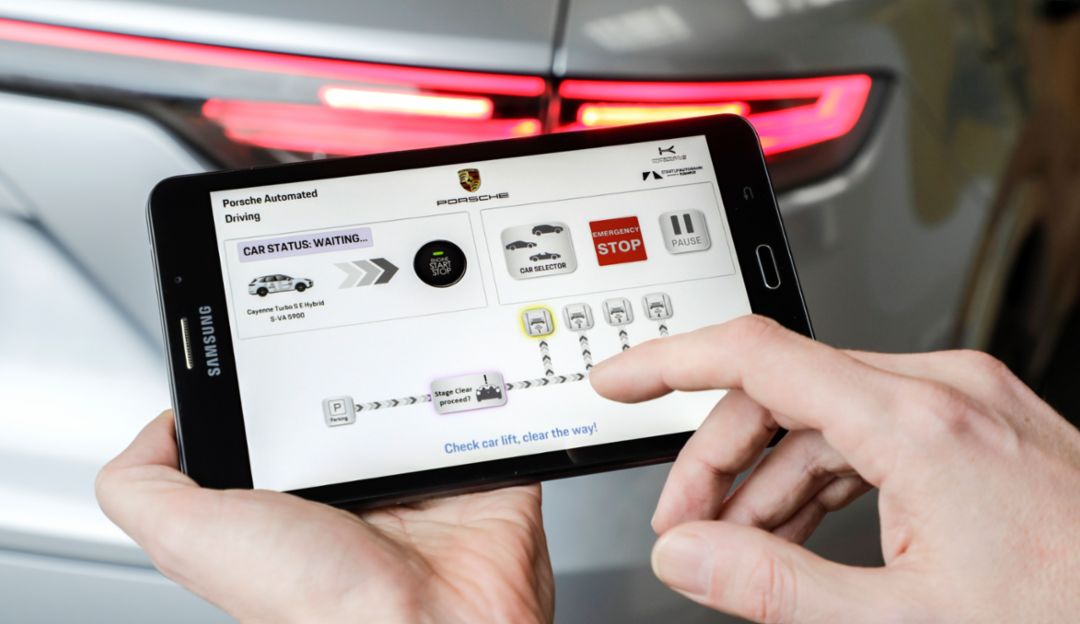
To realize this potential future, Porsche has been setting up partnerships with every major European telecom company, investing several tens of millions of dollars into development of a universal communication system that will talk with all of them. This allows for the Porsche’s of the future to not only be able to talk with each other constantly, but also communicate with other manufacturers versions of the same system. It’s a bit of a gentleman’s agreement at the moment instead of a de facto standard, with all the major manufacturers in Europe agreeing on what information would be shared, but it is laying the groundwork for the near future.
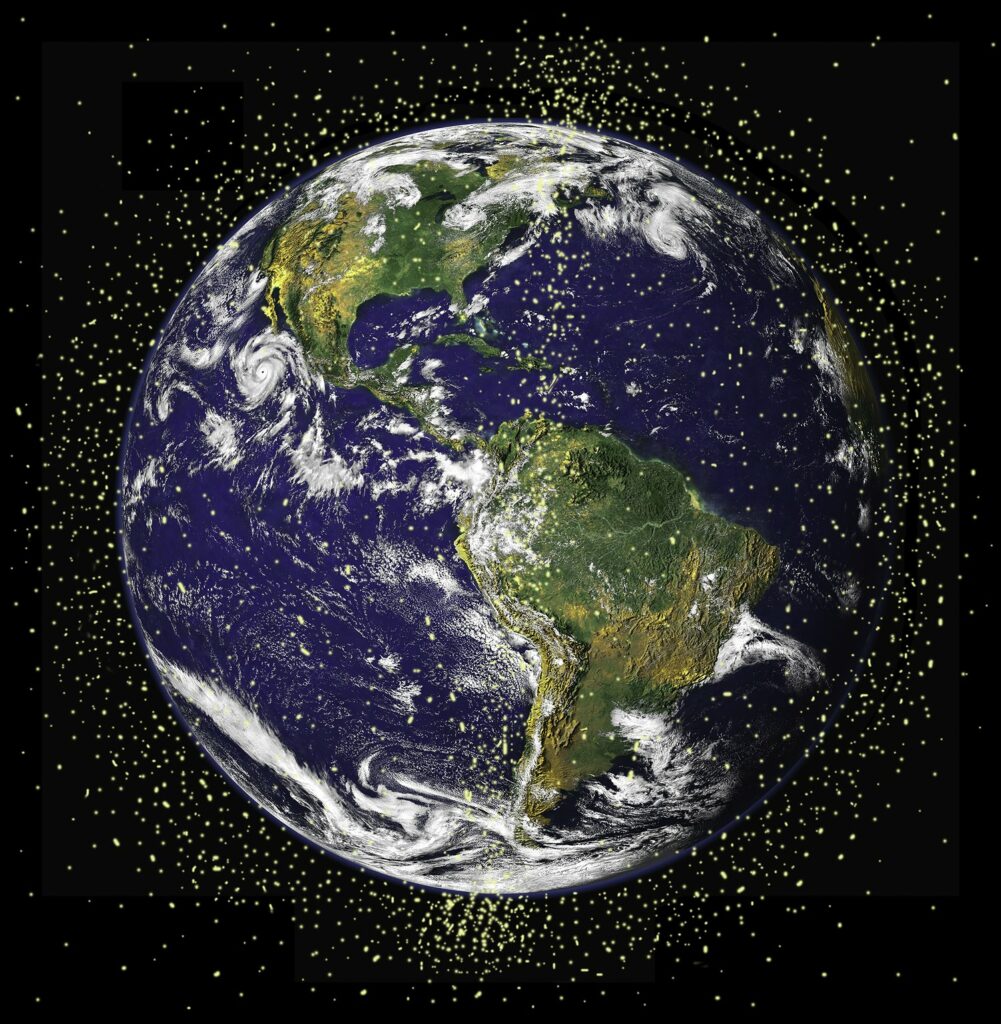
The other area that Porsche is investing heavily, and rather surprisingly, into are satellites. By working with the German Space Agency, and by extension the European Space Agency, Porsche is creating new receivers for their cars that will communicate with both low Earth orbit (LEO) and Geostationary Earth Orbit (GEO) satellites. At the moment, most new cars can receive GEO GPS signals for their sat-nav or LEO signals for satellite radio, but only a very rare few can actually communicate the other way.
Part of this is that both types of satellites orbit between 125 miles to over 20,000 miles (200 KM to 34,000 KM) above the Earth’s surface, and to generate a signal to be able to reach them is rather energy intensive. That is why the focus, at least for the moment, is on LEO satellites, as they are already used for sat-phones and satellite internet. Orbiting anywhere between 124 to 1,240 miles (200 to 2,000 KM) above the Earth, these satellites can be reached with a transmitter that needs no more than a few volts of power to generate a strong enough signal with a hefty antenna attached.
The Porsche Car Of The Future: How It All Ties Together
This section is more of a thought exercise than anything else, as the car that will take advantage of all the technology and integration so far discussed simply does not exist yet. Yet, an educated guess can be made about how that car will operate, what it will do, and how it will “talk.”
By 2030, semi-autonomous to mostly-autonomous driving modes are likely to be available, probably level 3 or 4 (some to minimal human oversight). The potential of having beyond-line-of-sight data streaming to the car from other cars or via a satellite link for an autonomous driving mode is massive, as it could let the AI platform, along with the driving computer and navigation system all quickly figure out a detour around traffic problems and action that detour without the “Driver” being any the wiser. The Pull Systems platform would also come into play here, as if that detour doesn’t add any more time to the trip, but does add a few miles, it could power down unused systems to give the car a temporary boost in its range.
The technology for real-time traffic communication via mobile is actually available now, through an app called Waze (We must disclaim that we are not sponsored or in any way affiliated with Waze Mobile, we just almost all use it because it’s so helpful). It uses both bluetooth signals from nearby traffic as well as beyond-line-of-sight communication via LTE/4G/5G mobile networks to constantly update the traffic conditions on the live map page every 2 to 5 seconds. Users can also tag speed cameras, construction zones, accidents, slow traffic, and the like with two taps or a voice command, and it works with both Apple CarPlay and Android Auto.
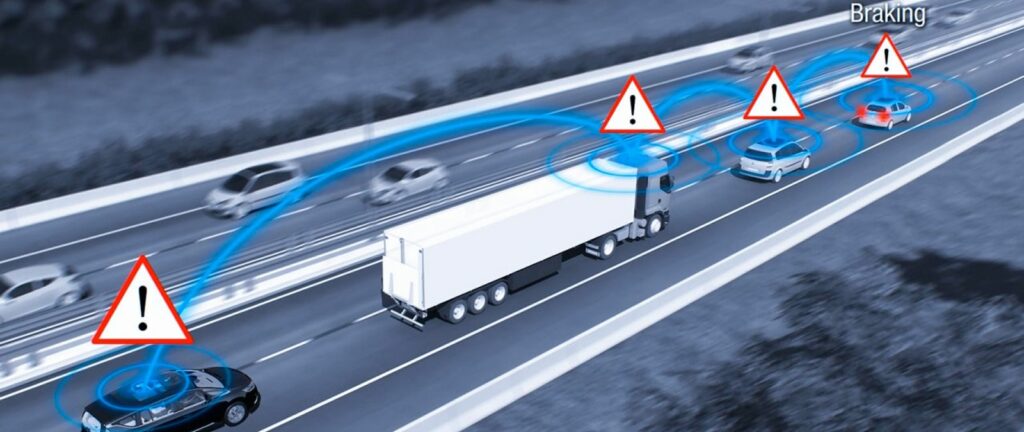
Now imagine that kind of interactivity and information sharing, except handled automatically by thousands of cars, trucks, motorcycles, and the like via deep learning and AI. If you’ve seen the 2003 movie Minority Report, there are several scenes of level 5 (fully autonomous) “pods” zipping around at great speed, avoiding each other automatically and getting their passengers to their destinations as efficiently as possible. That type of reality, or at least the very beginnings of it, are quite possibly arriving within the next decade. With that potential scenario, one can see why Porsche is investing now, to build up the infrastructure, transmitters, receivers, and communication systems required for all of that to happen without you even noticing it.
To once again use the smartphone analogy, when the very first smartphones were released, it was sometimes a right pain in the butt to get a stable, strong signal unless you happened to be at just the right distance and angle to one of the few towers that had the wireless band your phone needed. Fast forward to 2023, and the only time you won’t have a strong, stable signal is if you are in an elevator, a nuclear fallout shelter, or the battery in your phone is dead.
We are witnessing that exact same situation with EVs and constant vehicle connectivity right now, and as with many advancements in car technology in the past, Porsche is riding the crest of that wave and leading the charge.


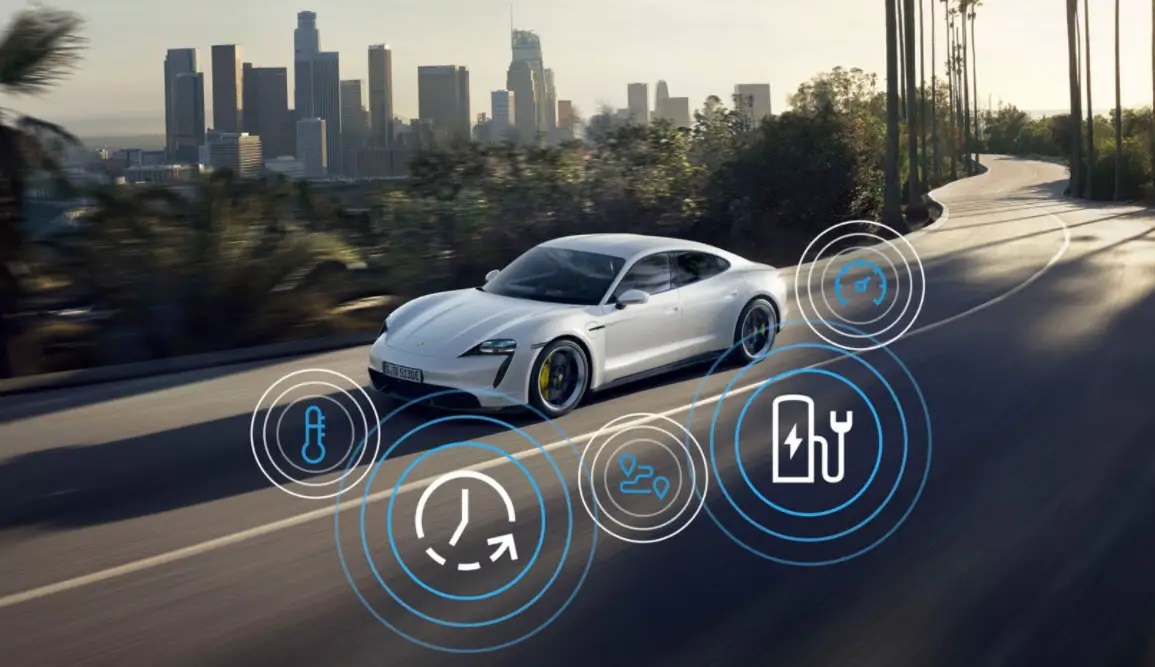

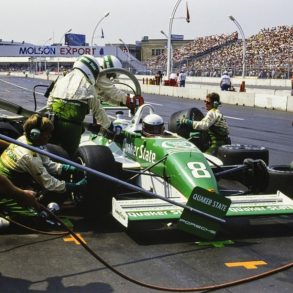
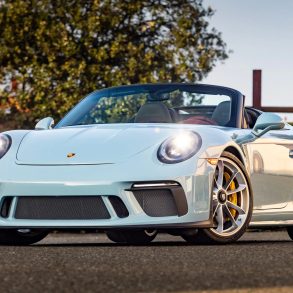
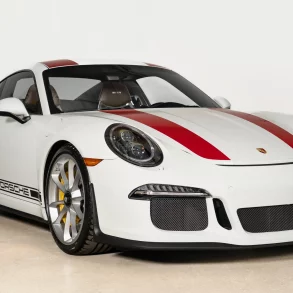
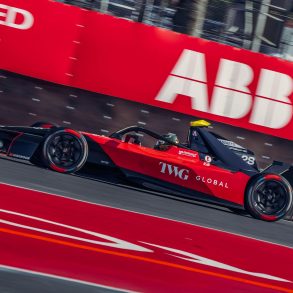
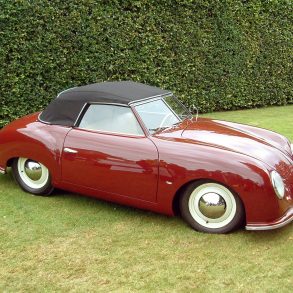

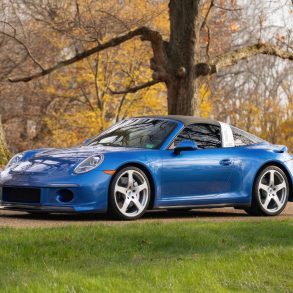

As the rest of us go not the dark ages with our useless modems. What BS.
0
This is another Apple in the making where Porsche will force you to buy it’s own branded mobile phone, laptop, clothes, underwear etc. to be able to sync with it’s crappy new gen EVs. I miss the cars up until the 997/987 gen. They were so pure yet so modern while still being analog in their own special way. Their newer cars are just like any other BMW or Mercedes or Audi or whatever since they’re all building crap for rich dummies to buy and flaunt.
0